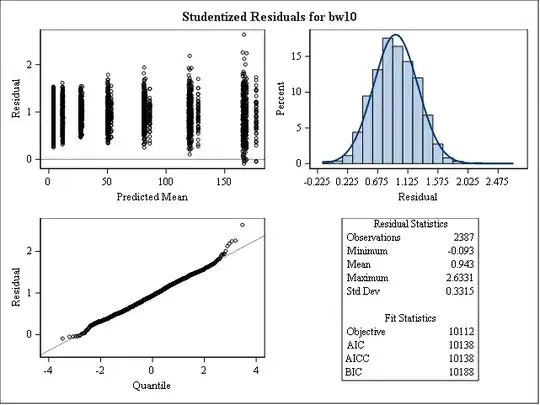Suppose $y_{ijt}$ is the weight for subject $j$ of treatment $i$ at week $t$, then the model looks like this: $$y_{ijt} = \alpha_i + \beta_i t + \gamma_i t^2 + e_{ijt}$$ The codes look like this
proc mixed data=dat;
class week trt subj;
model bw10=trt trt*w trt*w2 / ddfm=kr residual;
repeated week / subject=subj type=toeph;
run;
where "w" above is short for the continuous week variable. But the residual plots displayed below looks very weird as almost all the points are located above the zero line. When I change "type=toeph" to "type=arh(1)" or "type=un", similar phenomena happens. I guess it relates to the complex heterogeneous covariance structure, as it is normal in the homogeneous cases.
